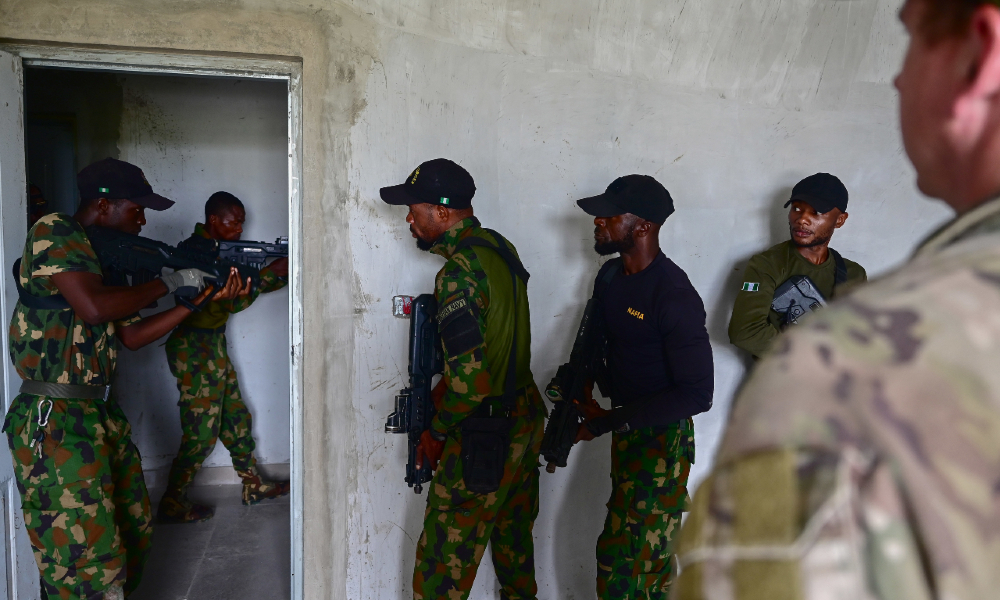Smart Mobs, Ultraviolence, and Civil Society: ISIS Innovations
Editor's Note: This is the first of four excerpts from the new book, ISIS: The State of Terror, by Jessica Stern and J.M.
Published by The Lawfare Institute
in Cooperation With

Editor's Note: This is the first of four excerpts from the new book, ISIS: The State of Terror, by Jessica Stern and J.M. Berger.
Smart mobs consist of people who are able to act in concert even if they don’t know each other. The people who make up smart mobs cooperate in ways never before possible because they carry devices that possess both communication and computing abilities. Their mobile devices connect them with other information devices in the environment as well as other people’s telephones.The smart mob paradigm kicks in when a large group of people spontaneously begins to act in synchronized ways because of the density of connections in their technology-assisted social network, where it is possible to connect with more people at different levels of intimacy than allowed by simple physical proximity. Although ISIS has methodically shaped and manipulated its social media networks, it has also benefited from this sort of self-organization. Small blended groups of ISIS members and supporters take jobs upon themselves, including translating communiqués and propaganda into multiple languages and crafting armies of Twitter “bots---scraps of code that mindlessly distribute the group's content and amplify its reach. In some ways, it was the realization of the concept of leaderless jihad, except that activity that appeared spontaneous could often be traced back to the organization’s social media team, which in turn coordinated with its leadership. At the same time as it was pioneering these approaches, back on the ground, ISIS was routing Iraqi government forces and seizing a significant swath of northern Iraq. It pushed its message out on social media with similar aggression. By mid-2014, its messaging machine was well oiled and effective. The differentiation from Al Qaeda was sharp. Despite the occasional dud, the overall storytelling and production quality of ISIS video was often incredible, the likes of which had been rarely seen in propaganda of any kind, and certainly leaps and bounds ahead of its predecessor’s often-sophisticated attempts. ISIS benefited from the constant, lethal pressure on Al Qaeda Central, which was forced to abandon its more ambitious media efforts in favor of sporadic talking-head releases. Ayman al Zawahiri was not a particularly strong orator to start with. His charms were not enhanced by a format that boiled down to him lecturing tediously while staring straight at a fixed camera for forty-five minutes. But the change in content was even more striking. ISIS was offering something novel, dispensing with religious argumentation and generalized exhortation and emphasizing two seemingly disparate themes---ultraviolence and civil society. They were unexpectedly potent when combined and alternated. The ultraviolence served multiple purposes. In addition to intimidating its enemies on the ground (Iraqi troops who fled before the IS advance had reportedly been terrified by footage of mass execution of prisoners), ultraviolence sold well with the target demographic for foreign fighters---angry, maladjusted young men whose blood stirred at images of grisly beheadings and the crucifixion of so-called apostates. But the emphasis on civil society, in videos and print productions, provided a valuable counterpoint and validation of the violence, offsetting its repulsion. ISIS would not shy away from whatever needed to be done, but its goal was to create a Muslim society with all the trappings---food aplenty, industry, banks, schools, health care, social services, pothole repair---even a nursing home with the insurgents’ unmistakable black flag draped over the walls. The narrative tracks ultimately advanced the same message---come to the Islamic State and be part of something. Throughout its long history, Al Qaeda had never put forward such an open invitation. Following the model of a secret society, Al Qaeda had created significant obstacles for would-be members, from the difficulty of even finding it to months of religious training that preceded battle. The ISIS message was exactly the opposite---you have a place here, if you want it, and we’ll put you to work on this exciting project just as soon as you show up (although in reality, some less radical recruits were quietly subjected to indoctrination anyway). It was yet another lesson from Abu Bakr al Naji’s The Management of Savagery. The media campaign’s “specific target is to (motivate) crowds drawn from the masses to fly to the regions which we manage,” Al Naji wrote, as well as to demotivate or create apathy and inertia among who might oppose the establishment of the selfstyled Islamic State. The vanguard was dead. The idea of a popular revolution had begun. In the end, Al Qaeda’s failure was the ironic failure of all vanguard movements---an assumption that the masses, once awakened, will not require close supervision, specific guidance, and a vision that extends beyond fighting. Al Qaeda’s vision is---often explicitly---nihilistic. ISIS, for all its barbarity, is both more pragmatic and more utopian. Hand in hand with its tremendous capacity for destruction, it also seeks to build. Most vanguard extremist movements paradoxically believe that ordinary people are afflicted with deep ignorance, yet such movements also expect that once their eyes have been opened, the masses will instinctively know what to do next. ISIS does not take the masses for granted; its chain of influence extends beyond the elite, beyond its strategists and loyal fighting force, out into the world. Its propaganda is not simply a call to arms, it is also a call for noncombatants, men and women alike, to build a nation-state alongside the warriors, with a role for engineers, doctors, filmmakers, sysadmins, and even traffic cops. It’s the opening act on a brave new world. It’s too soon to know how the invitation to the masses will be received, or even if ISIS will last long enough to find out. But win or lose, extremism will likely never be the same again. Jessica Stern is a lecturer on terrorism at Harvard University, and a member of Hoover Institution Task Force on National Security and law. J.M. Berger is a non-resident scholar at the Brookings Institution.
J.M. Berger is a fellow with George Washington University’s Program on Extremism. He is a researcher, analyst, and consultant, with a special focus on extremist activities in the U.S. and use of social media. Berger is co-author of the critically acclaimed ISIS: The State of Terror with Jessica Stern and author of Jihad Joe: Americans Who Go to War in the Name of Islam, the definitive history of the U.S. jihadist movement. He was previously a non-resident fellow with The Brookings Institution, Project on U.S. Relations with the Islamic World, and an associate fellow with the International Centre for the Study of Radicalisation.


.jpeg?sfvrsn=96471529_5)


